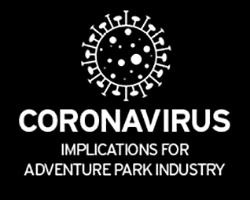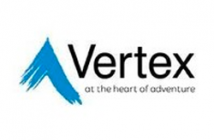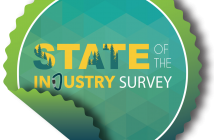The $1.9 trillion American Rescue Plan (ARP) coronavirus relief package gives aid to those who have lost their jobs and to small businesses and non-profits that have been extremely affected by the pandemic. There’s a lot in the legislation that can benefit adventure parks, experiential programs, and camps. 
FUNDING THE ADVENTURE
Among the provisions that should be good news to both for-profit adventure parks and traditional businesses as well as nonprofits, is $350 billion allocated to support state and local governments.
A whopping $10 billion has been allocated to help states assist small businesses within their borders. The State Small Business Credit Initiative (SSBCI), with $2.5 billion set aside for businesses owned and controlled by socially and economically disadvantaged individuals, including minority-owned businesses, will enable state governments to make low-interest loans and other investments to help their small business economies recover.
Under the ARP, another small business financing program has been created to leverage $35 billion in government funds into $175 billion in additional small business lending and investment. The funds will be invested in successful state, local, tribal and non-profit small business financing programs. The goal is to provide low interest loans and venture capital to help entrepreneurs innovate, create, and maintain jobs and provide the essential goods and services that communities depend on.
PPP THREE
The ARP not only included billions in support for state and local governments and their programs, it increased funding and expanded eligibility for the Payroll Protection Program (PPP). The PPP has another $7.25-billion in additional funding.
In general, the loan terms are consistent with the first two rounds. While there have been some changes to the eligibility criteria, adventure parks and organizations are eligible to apply if they:
• previously received a PPP loan and will or have properly used the full amount;
• have no more than 300 employees (down from the first round’s up to 500 employees); and
• can demonstrate at least a 25 percent reduction in gross receipts in 2020 relative to 2019.
Eligible expenses under the current PPP program are consistent with earlier rounds and include payroll, rent/mortgage payments, utilities, etc. Seasonal businesses are eligible for PPP loans even if the business was dormant or not fully operating on Feb. 15, the primary eligibility date. If the business was operating for any 12-week (up from the previous 8-week) period between Feb. 15, 2019, and Feb. 15, 2020, it is eligible for a PPP loan.
Today, the ARP allows second-draw PPP loans for some non-profit organizations that previously received a PPP loan. Generally, the eligibility requirements for PPP loans to non-profits are the same as the requirements for other entities, with only a few differences.
EIDL FOR MORE RESCUE
The Economic Injury Disaster Loan (EIDL) program was created to provide economic relief to businesses that are currently experiencing a temporary loss of revenue due to the pandemic. The EIDL helps small businesses, organizations and nonprofits meet their financial obligations and operating expenses.
The ARP will provide $15 billion to the EIDL for long-term, low-interest loans to be made by the Small Business Administration (SBA). Severely impacted small businesses with fewer than 10 workers will be given priority for some of the funds.
Borrowers can apply for both the PPP and EIDL, although funds from both cannot be used for the same purpose. The PPP loan proceeds must be used for eligible purposes, and some or all of the loan may be forgiven.
The newly expanded EIDL applies looser credit standards and creates a rapid grant procedure than could put $10,000 in the hands of adventure park operators, suppliers and nonprofits to pay salary and operating expenses. While not every business or nonprofit will qualify for the EIDL program, it is a valid option for many.
What’s more, under the ARP, Targeted EIDL Advances for small businesses of up to $10,000 may be converted to grants if used to cover a business’s operating expenses. An interest rate of 3.75 percent is required for loans under $25,000 while, for the record, EIDL grants are exempt from federal tax.
SHUTTERED VENUES
The SBA’s Shuttered Venue Operators Grant (SVOG) program may be difficult for many adventure park operators to qualify for, but the $1.25 billion, including $500,000 for technical assistance with applications, is providing yet another funding option.
Only entities whose principal business activity is being a live venue operator/promoter/theatrical producer/live performing arts organization operator, museum operator, motion picture theater operator or talent representatives are eligible for SVOCs. Entities of these types owned by state or local governments (for example, museums or historic homes) are eligible to apply if the governmentally-owned entity also acts solely as a venue operator, museum, etc., and not also include other types of entities.
RESCUING THE PAYROLL
The Employee Retention Credit (ERC) is a refundable payroll tax credit for wages paid and health coverage provided by an employer whose operations were either fully or partially suspended because of the pandemic. The ERC can be claimed quarterly to help offset the cost of retaining employees.
The ARP increased the availability and value of the Employee Retention Credit (ERC) for employers who are “severely financially distressed” by allowing such employers to take all wages into account, not only those that are paid for employees not providing services. The ARP also expanded the availability of the credit from the current June 30, 2021 deadline to those wages paid in 2021.
The credit is 70 percent of qualified wages (including amounts paid towards health insurance) per full-time employee up to a cap of $10,000 of wages per employee. In other words, the employer can get a credit of up to $7,000 per employee, per calendar quarter. Plus, the ERC now can be used to offset an employer’s Medicare tax liability in addition to the Social Security tax.
EMPLOYER-PROVIDED SICK PAY AND FAMILY LEAVE PAY
One of the first relief measures provided by our lawmakers to lessen the financial impact of the pandemic was the payroll tax credit for employers providing paid sick and family leave. There was also a similar credit for the self-employed. The Families First Coronavirus Response Act (FFCRA), provided small and midsize employers with refundable tax credits to reimburse them, dollar-for-dollar, for the cost of providing paid sick and family leave wages to their employees for leave related to COVID-19, through Sept. 30, 2021.
Although employers are no longer required to pay employees forced to miss work due to Covid, payments voluntarily made to a qualified employee, subject to a maximum of $1,400 per week, are refundable dollar-for-dollar as a federal payroll tax credit by employers with fewer than 300 employees. The bill also increases the limit on applicable wages for which the credit can be claimed to $12,000 from $10,000, effective March 31, 2021.
RESTURANT REVITALIZATION FUND
The ARP appropriated $28.6 billion for a new Restaurant Revitalization Fund (RRF). The grant program provides a maximum amount to eligible restaurants of $10 million per eligible entity and any affiliated business ($5 million for each physical location). Establishments with less than $500,000 in gross receipts in 2019 can draw from a $5 billion set-aside.
RRF funds may be used to offset pandemic-related costs including payroll, rent or mortgage obligations, utilities, maintenance expenses (including construction to accommodate outdoor seating), food and beverage expenses, paid sick leave, covered supplier costs and other expenses. The funds are available for food service operations where the primary purpose is serving food or drink with the program not expiring until December 31, 2021. And, like Targeted EIDL grants, these grants are excluded from income and will not result in denied deductions.
There are, of course, restrictions. Establishments ineligible include state and local government operated businesses, those that are owned or operated in 20 or more locations, those with a pending application or that have received a Shuttered Venues Operators Grant (SVOG) and publicly-traded businesses.
MISCELLANEOUS RESCUES
In the area of workplace safety, the ARP provided $150 billion for the Department of Labor’s worker protection activities, including $100 million for the Occupational Safety and Health Administration (OSHA). Of the OSHA funding, a portion is reserved for occupational health and safety training grants for non-profits, and another portion for coronavirus-related enforcement activities at high-risk workplaces.
To guide an adventure park operator, business owner, manager or nonprofit executive through this maze of new rules and benefits, the so-called Community Navigator Services has been funded to the tune of $100 million to provide outreach, education, and technical assistance with the SBA’s programs. The SBA, itself, is receiving $1.325 billion in additional funding to guide an adventure park operator, business owner, manager or nonprofit executive through this maze of new rules and benefits.
Although Community Navigators, the SBA, state agencies, community organizations, as well as banks and other financial institutions will provide invaluable services, professional guidance will be required in order to maximize the benefits and programs earmarked for an adventure park or supplier.





